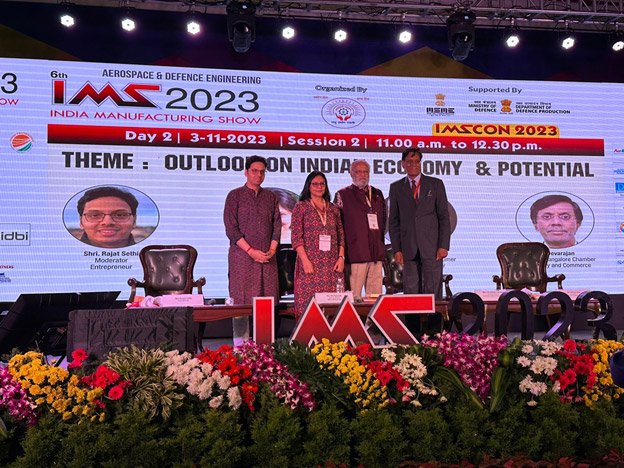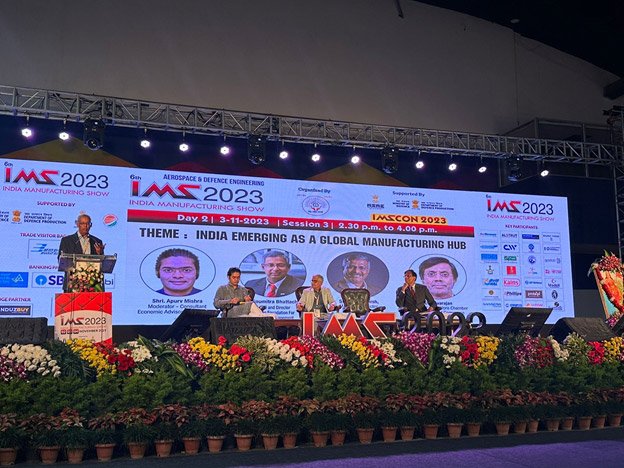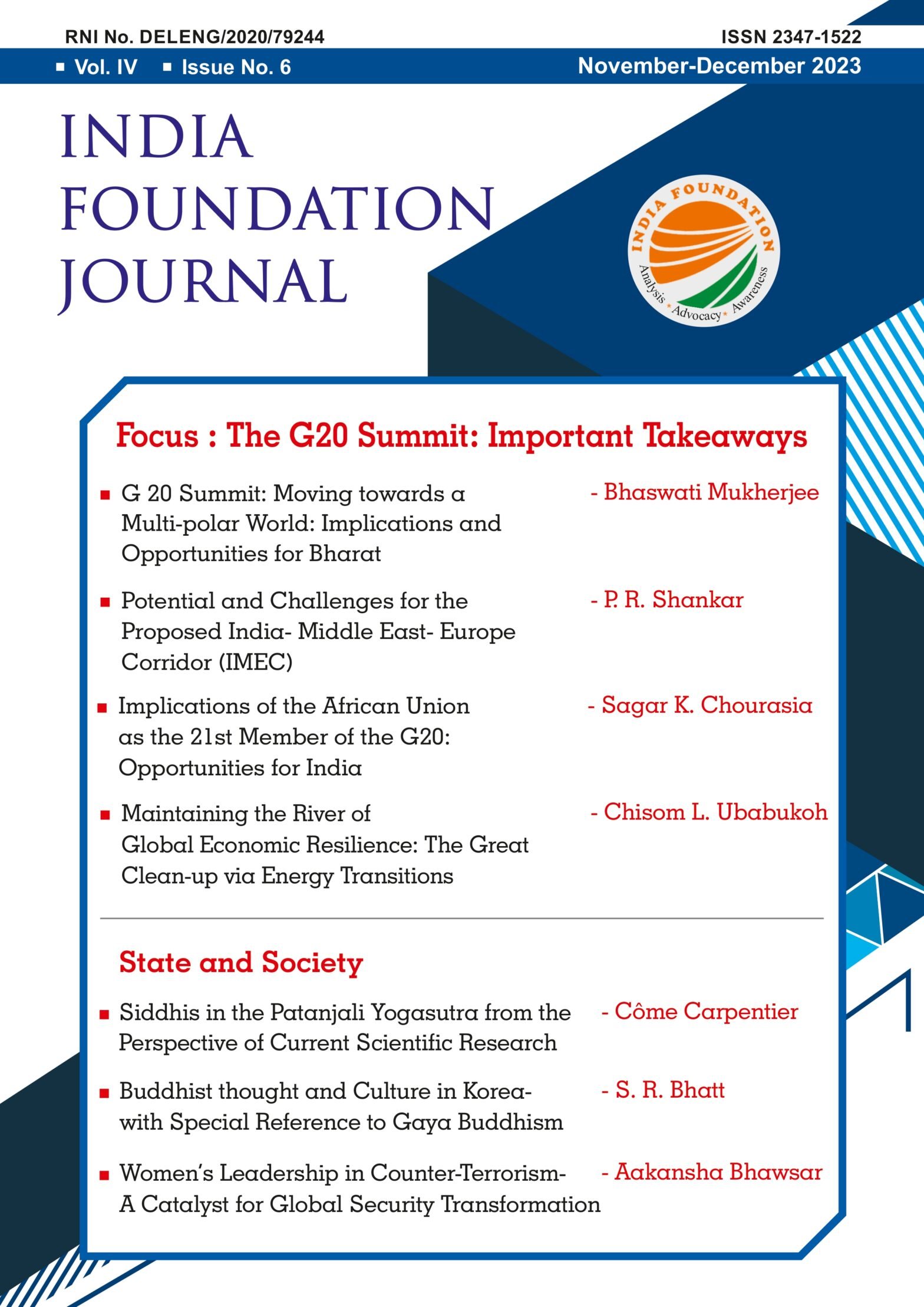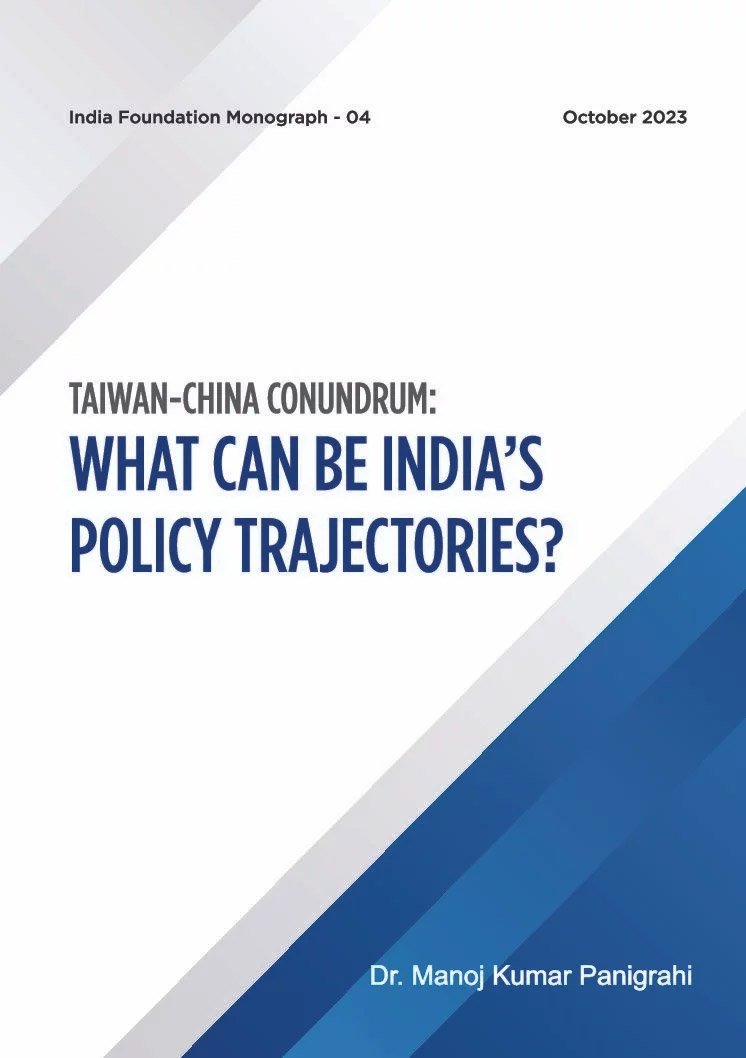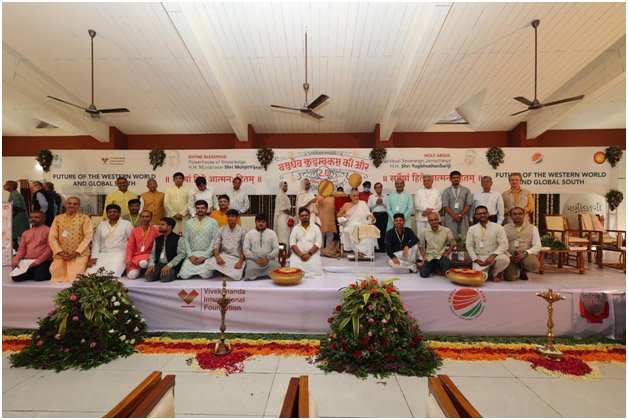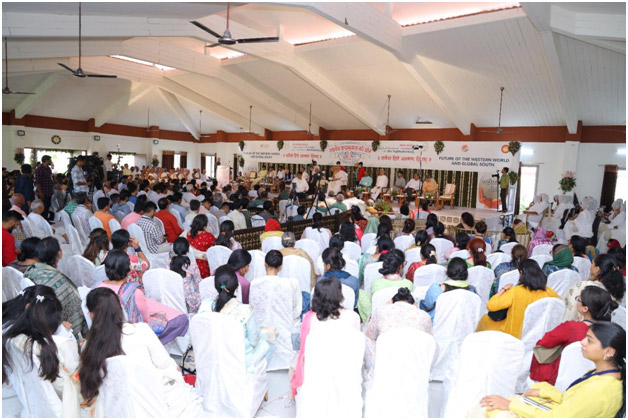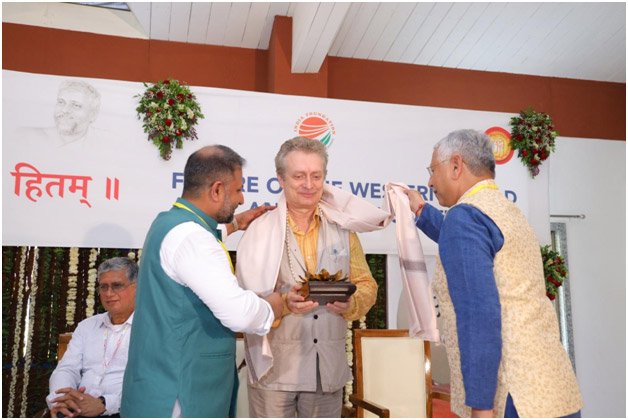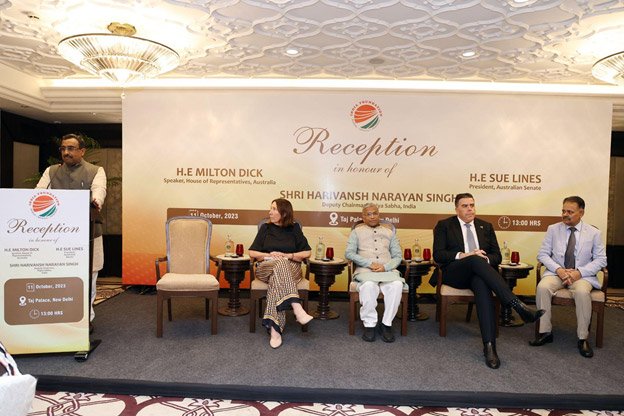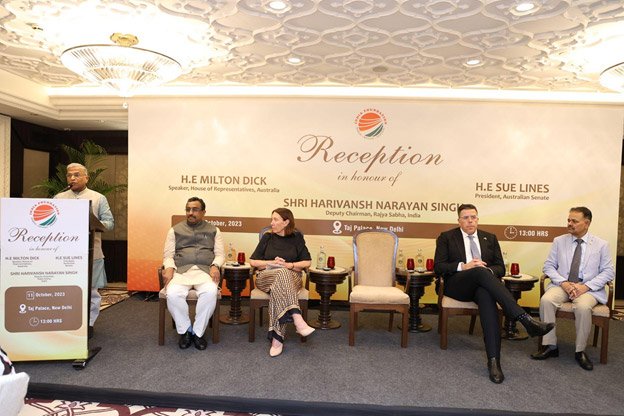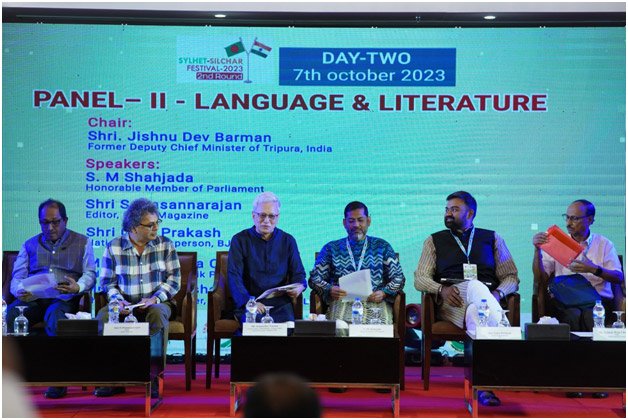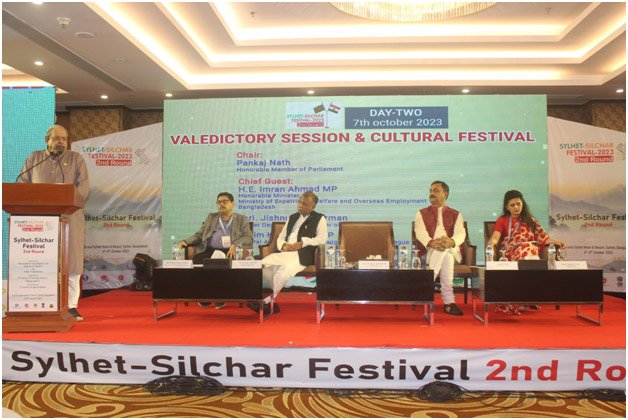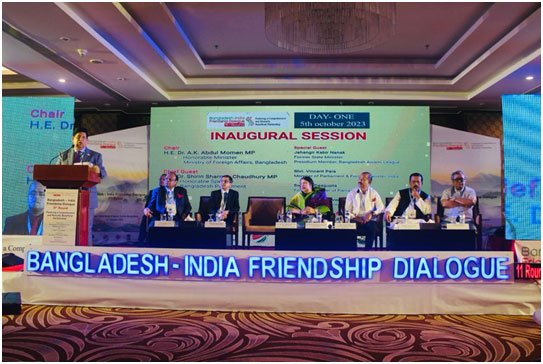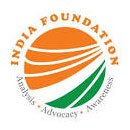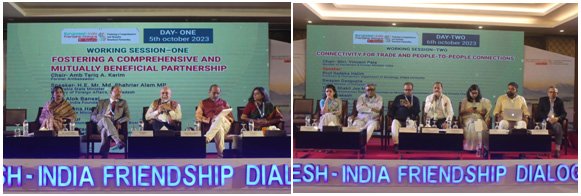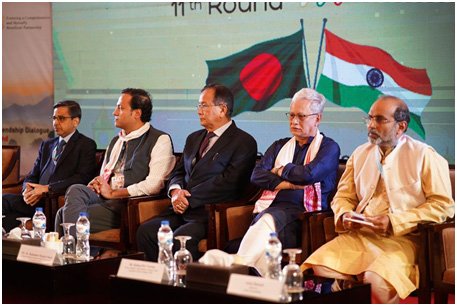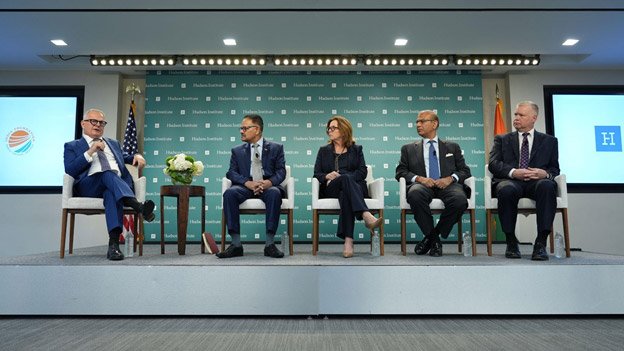On 09 Sep 2023, the leaders of the United States, India, Saudi Arabia, the United Arab Emirates, France, Germany, Italy and the European Union entered into an Memorandum of Understanding (MOU) in order to work together to develop a new India-Middle East-Europe Economic Corridor[i]. This was announced at the G20 Leaders’ event on the Partnership for Global Infrastructure and Investment in Delhi. As per the MOU[ii], the corridor is expected to stimulate economic development through enhanced connectivity and economic integration across two continents. It aims to achieve sustainable and inclusive economic growth in the region. In this context, it is relevant to carry out an examination of the geo-economic and geopolitical potential of this project, what it means to participating nations and the challenges it faces.
Potential of The Corridor
The IMEC has two components. The East Corridor connects India to the Middle-East and Gulf countries. The Northern Corridor connects the Middle-East to Europe[iii]. It is an extensive network which integrates a railway corridor, a hydrogen pipeline, and high-density optical fibre cables. The corridor is expected to facilitate the development and export of clean energy; lay undersea cables and link energy grids and telecommunication lines to expand reliable access to electricity; enable innovation of advanced clean energy technology; and connect communities with secure and stable Internet. The corridor, envisions driving existing trade and manufacturing, strengthening food security and integrating supply chains. The participating nations aim to unlock new investments, including from the private sector, and spur the creation of employment through enhanced business opportunities. From an Indian point of view there will be a seamless logistical corridor linking India to southern Europe. The corridor has the potential to ramp up the economies of the nations and have great geo-economic and geopolitical consequences.
The corridor is being envisaged by nations who have the ability to invest based on a felt need. Very importantly, most of the nations are allied [iv] to each other or are in a strategic partnership[v],[vi]. This must be seen against the fact that it is exactly the opposite of CPEC/BRI where China has been the dominant partner as a lender with a weaker nation as a borrower entity. Very often, the BRI has been synonymous with the Debt Trap diplomacy of China[vii]. ‘Mutual benefit’ of the participating nations is an important driver of the IMEC. As an extension, another important aspect of IMEC is that all participating nations are in it for diversification or expansion of their geo-economic interests. A major fallout of IMEC will be that the CPEC/BRI has a competing alternative. Other nations can choose from the available alternatives for their development.
Strategic Factors
The Iran-Saudi peace deal was seen as a major victory for China[viii]. Consequently, it was also being seen that the Chinese influence in the region had increased to the detriment of USA and India. It is a considered opinion that, IMEC will largely neutralise China’s undue influence in the region when it is established.
The second aspect which merits consideration is that the security of the corridor will be the responsibility of the participating nations. As a result, the security of the maritime segment between India and the Gulf will devolve largely on the USA and India. Resultantly, it will be a major counter to the increasing Chinese maritime presence in the Arabian Sea. It will also prevent the China-Pakistan combine from militarising Gwadar beyond a point. In fact, the participation of the Gulf States and Saudi Arabia in this project completely outflanks Pakistan and becomes a dampener on its hybrid activities. This will benefit India immensely.
The third aspect of the corridor is that it by passes the troubled regions of West Asia, namely Syria, Iraq, Iran, and Turkey. The fourth aspect is that the corridor avoids the congested Suez Canal and is expected to reduce the transit time between India and Europe by 40 per cent and transportation costs by 30 per cent[ix]. Overall, there is optimism that IMEC will result in enhanced logistical efficiency, lowering business costs, promoting economic unity, create jobs, and reduce greenhouse gas emissions. The hope and expectation is that it will lead to an integrative transformation across Asia, Europe, and the Middle East.
Indian Perspective
The IMEC opens up many vistas for India. Its soft power and large diaspora in the Middle-East can be leveraged to accrue great all-round advantage. The corridor holds promise of cementing India’s energy security and serving as a market for Indian goods. India gains strategically since its presence will exert greater influence over the Indian Ocean and potentially expand its reach into the Mediterranean Sea.
Traditionally, it was always thought that India’s interests were from the Gulf of Aden to The Malacca Straits[x]. IMEC will expand India’s sphere of influence. It will hereafter extend far beyond the horn of Africa. Resultantly, India will become a significant player in the Middle East geopolitics. India’s influence in North Africa is also bound to increase. It also brings Israel and the eastern Mediterranean into India’s neighbourhood[xi]. As India’s strategic foot print increases, its economic presence will grow.
The IMEC will provide plenty of opportunity for infrastructure construction and development. There will be new rail lines, gas pipelines, energy grids and data links/cables which will flow along the corridor. Indian expertise in establishing, constructing, running and maintaining such infrastructure will be critical to the success of the project. India’s experience in infrastructure development at affordable and reasonable costs will ensure that Indian firms are continually engaged in this area.
The corridor provides a viable alternative to International North-South Transport Corridor through Iran and Russia that was conceived at the turn of the century but has not made progress for one reason or the other. In fact it has not even got off the ground[xii]. It will give India an alternate route to trade with Europe.
While IMEC will boost trade between EU and India significantly, trade with the Gulf countries is set to boom. Trade between India and the Gulf Cooperation Council (GCC) – comprising Saudi Arabia, the UAE, Qatar, Kuwait, Oman and Bahrain – has already surged, reaching US$154.7 billion in the 2021-22 financial year. This is a 77 per cent year-on-year increment[xiii]. Overall, IMEC is a good trade proposition for India even if it is implemented partially.
India’s relations with the Kingdom of Saudi have expanded exponentially in the recent past. The recently concluded state visit by the Crown Prince of Saudi Arabia, Muhammad bin Salman (MBS)[xiv],[xv] when seen in conjunction with the recently concluded G20 Summit in India and the MOU on IMEC underscores this aspect. A joint working group (JWG)[xvi] is expected to be set up to handle the US$100 billion investments promised by Saudi Arabia in 2019. This was halted due to the pandemic and is likely to be revived now. IMEC and this deal will feed off each other to get due momentum. This will be a game changer in many ways. It also signals a change to people in Kashmir which will quieten down once Saudi investments are grounded in India.
The IMEC will provide a secure flank to India in the Arabian Sea. The enhanced importance and geopolitical implications of IMEC being a multilateral effort will provide inherent security to India in this area. It virtually rules out interruption of energy supplies and trade activity to the West. It will reduce the chances of any misadventure by either Pakistan or China. They will have to think twice before any maverick activity.
Gulf and Saudi Interests
It is widely being recognised that availability of fossil fuels is finite and one day they will no more be available. If the oil producing countries do not diversify, one day they will wake up to find that their economies have no tomorrow. In this milieu, the countries of the Middle East have a great opportunity to diversify from their fossil fuel-based economies. IMEC provides them adequate scope for transforming from being primarily oil exporters to becoming global hubs for tourism, investment and logistics. These commodity-based economies have been trying to diversify into ‘alternate economy’ channels and increase their share in the service sectors of global economy. IMEC gives them a great opportunity to embark on such new paths.
Hitherto-fore, the Gulf has seen global trade flow past it in the South through the Suez Canal or in the North through Turkey. The IMEC gives a golden chance for the Gulf Countries to be the hub and transit link between Asian and European economies for the first time in their history. Such corridors invariably also provide inherent opportunity for the diversification they seek. They are unlikely to let go of this chance.
The cash rich Gulf countries need avenues for investment in the global arena and specially in India which is a growing market with tremendous economic potential. Additionally, most of these nations have deep and traditional links with India. More importantly they are food deficient. They need the huge bread basket of India to resolve their food security issues which will be endemic. This factor alone will drive up the chances of the IMEC coming into being.
The IMEC and its attendant geopolitics gives them a major alternative from being enmeshed and entrapped in the ‘secretive’ Chinese global development and security initiatives. From a very fundamental point of view, the Gulf Sheikhdoms will not give up on their monarchist capitalist model of rule. Too close an association with China brings in danger of communist thinking. Further they will not like to be seen in one camp or the other. When seen from this perspective, IMEC gives them a great opportunity to hedge between big powers and blaze their own diplomatic trail.
The IMEC also carries the promise, even if it is faint, of peace in the Arab world. If IMEC must succeed, Israel has to be part of the deal. Hence, there has to be a climate of peace even if it is grudgingly accepted. However, in the larger sense, the Gulf nations seem to be realising that they have to move towards peaceful co-existence if they are to progress, even if some indications are to the contrary[xvii].
The US Angle
In May 2023, during the summit in Hiroshima, Japan, G7 leaders affirmed their commitment to identify new opportunities to scale the Partnership for Global Infrastructure and Investment (PGII). This US initiative aims to mobilise US$ 600 billion over the next five years in global infrastructure investments to make a difference in people’s lives around the world, strengthen and diversify supply chains, and advance shared national security interests[xviii].
IMEC is the first major project under the US PGII umbrella. It is also a direct counter to China’s BRI in the region[xix]. Inroads made by China through the BRI were starting to adversely affect US influence in the region. The IMEC serves to regain the Middle East/Gulf for the USA and reaffirm its global dominance. This is specially important since the USA was seen to be losing ground to China after the Iran–Saudi peace deal.
A major factor in the IMEC is that it opens a gateway to Europe. It was widely believed that the EU nations suffered due to the Ukraine war as their energy and trade links with Russia were broken at the behest of USA. This has been an underlying irritant in US -EU relations. This gateway compensates EU for the rupture in its linkages with Russia. If this corridor is successful, the US cause and influence as a leader gets a major boost.
The IMEC serves another major purpose of security. Inevitably, this corridor will bring relative stability and peace in the region. It will also result in a new and shared security architecture in this region. The evolving architecture will necessarily be multi-lateral in which all participating nations will contribute. A new rules-based order will be implemented in the region to promote stability. This will serve to free up US forces for the Western Pacific in its effort to contain China. IMEC serves the larger Indo-Pacific cause and increases US global influence.
EU Interests
The EU has backed the IMEC plan which links Europewith the Middle East and India via rail and sea[xx]. It has been described as much more than just a railway or a cable. It is well known that EU has over-invested in China. However, the EU-China relations are fraying[xxi]. EU has increased its efforts to de risk and pivot away from China. It sees India as the global alternative to China. This corridor could speed up and enhance trade as well as investment between India and Europe.
The corridor also has the potential to offset the dependence of EU nations on Russia for their energy needs. It provides EU with energy security and alters European geopolitical dynamics. The IMEC also provides a direct connect to the Gulf and India without intermediaries like Turkey or Egypt which have held them hostage for many reasons.
Israeli Interests
Many in Israel see the IMEC as a path towards normalisation of its relations with Saudi Arabia and the larger Arab world [xxii]. This diplomacy is a keystone of the US strategy to bring lasting peace in the Middle East. Despite reluctance to make peace with Israel officially, the Saudis have already signalled that they are amenable to peace with it. In fact, Israeli Prime Minister Benjamin Netanyahu has gone to the extent of saying that the IMEC is a “cooperation project that is the greatest in our history … [and which] takes us to a new era of regional and global integration and cooperation, unprecedented and unique in its scope”. The next major dividend for Israel will be that it gets an opportunity to monetise its technological prowess specially in the food and communication sector. Last but not the least, they will get direct economic benefit due to a jump in Haifa Port volumes.
Turkish Viewpoint
Turkey sees the IMEC as bypassing it completely. Turkey stands to lose its status as the primary link between the east and west and the silk pathways.[xxiii] Turkey wants to maintain its long-standing position as a major transit hub for commodities moving from Asia to Europe. Turkish President Recep Tayyip Erdogan has gone as far as to declare that “there can be no corridor without Turkey” and that “the most appropriate route for trade from east to west must pass through Turkey”. Turkey not only sees itself losing economically but also sees its strategic value in the Islamic world going down. However, given the current financial condition[xxiv], Turkey cannot contribute to any financial stake into the IMEC and will count on the Gulf nations to come to its rescue. That does not seem to be happening.
Food security and India-Middle East Food Corridor
The onset of climate change, realignment of global politics and Ukraine war has brought forth the stark fact that food security is essential for national and human security. Nations have been taking steps to ensure their food security for an uncertain future. In this context, the United Arab Emirates (UAE), Israel, and India are creating an India-Middle East Food Corridor[xxv]. This initiative is part of the larger I2U2 formulation. This will inevitably be subsumed into the IMEC and will form an important constituent of the project.
The Food Corridor is a resilient value chain already developing quietly under the radar. It envisages synergising commercial and technological strengths of India, Israel and UAE to create a food exporting powerhouse. The technologies used are visualised to be innovative and climate adaptive. The food corridor is being developed organically between the three nations. The initiative is based on investments through the private sector or through bilateral public-private partnerships / joint ventures
The fundamental facts driving the Food Corridor are three facetted. The first is that the Arab and Gulf states need to enhance their food security. It is a strategic need for them which will only become more acute with the onset of climate change. India’s strategic imperative is to increase the value of its food production. The second facet is that India is a net food exporter whose value is under par. Despite being the world’s second-largest food producer when measured[xxvi] by calorie content, it ranks fourth when measured by the total value of agricultural production. Further, India processes less than 10% of its agricultural output[xxvii]. In a situation of high production levels and low processing rates, the food corridor presents huge opportunities for India. It is worth noting that more than 1/10th of India’s workforce is employed in the food-processing sector. India’s strategic priority includes developing higher value-added secondary food processing as well as logistics that prevent distribution loss through efficient integration from farm to retail outlets. Thirdly, Israel’s contribution to the food corridor also derives from Israeli-Indian cooperation in innovative technologies and promotion of start-ups. Significantly on 14 July 2022, during the first “I2U2” heads of government summit, the food corridor featured prominently.
Energy Security
As sources and reserves of energy dwindle, the requirement of energy for sustainment as also development of all economies will increase. Hence there is a need to find new sources of clean energy. Simultaneously there is also a need to redistribute, optimise and use existing sources of energy. This is especially important in energy deficient large economies of Europe and India. In this context, the Middle East becomes very crucial in future from two viewpoints. In the current environment, it will continue to be one of the main sources of fossil fuel energy. Accordingly, transportation of fossil fuel and gas energy to Europe and India through an integrated pipeline/tanker transportation system is envisaged in IMEC in the current times. This will give relief to EU nations, in the short term, which have suffered dearth of energy due to Ukraine war. In the long term the IMEC is betting on Green Hydrogen, which is expected to be a game changer.
Green hydrogen is produced by splitting water into hydrogen and oxygen by electrolysis[xxviii]. The hydrogen so produced is completely carbon free. The oxygen is vented into the atmosphere with no negative impact. However, to achieve electrolysis, electricity is needed. This process to make Green Hydrogen needs to be powered by renewable energy sources, such as wind or solar. It then makes Green Hydrogen the cleanest option since it is generated from renewable energy sources without any trace of Carbon in the process. The Hydrogen so produced can be compressed and transported through pipelines as shown in the picture above. The Middle East which is a rich source of renewable and untapped solar energy will be utilised for generating Green Hydrogen through technologies being currently developed. Most countries which have a high demand of energy are increasingly looking at Green Hydrogen. India is betting big on it with its national hydrogen mission[xxix]. For countries in the temperate belt, Green Hydrogen produced in the tropics will be invaluable. At that time, the IMEC will come into its own.
The Shape of IMECAs IMEC unfolds, the following will be prominently visible
- Digital connectivity through a transcontinental fibre-optic network between the regions involved. This will usher in a new era of digitalised inter-operability.
- Transmission cables and pipelines which run alongside the proposed port, rail and road corridor.
- Supply chain integration through joint manufacturing ventures between public and private sector partners. These could be intra-national or international in nature.
- Food production, processing and supply chains.
- Increased mutual dependence on the nations of IMEC.
- A new security architecture in the region.
Prospects of the IMEC
The IMEC could well succeed where earlier corridors including the BRI could not. There are many reasons for this. At the outset th I2U2 coalition of India–UAE–Israel–US has been making steady progress. It provides a basic sheet anchor for the IMEC to build upon. The IMEC and I2U2 would be complimentary to each other. This is a corridor of willing nations in which each brings a niche speciality to the table for mutually benefitting outcomes. Further all of them have the capability to invest into the venture. Everyone will have skin in the game. They also in strategic partnerships or are allies with experience of working with each other. It appears that some ground work is being laid by a consortium of Emirati firms, wh have already begun work on developing a US$7 billion logistics and distribution network for theenvisaged India-Middle East food corridor. Most importantly, there is an existing infrastructure frame work which can be built upon. The overall emphasis is not on the basics but in looking ahead for the future.
Macro Comparison with BRI
Already there are comparisons being made between the IMEC and BRI. That is to be expected and natural. The essence of the IMEC tends to get lost sight of in doing so. Some issues have been highlighted earlier and are not being repeated. However, a macro comparison is of value. In terms of scope, the BRI is vast and global with a predominantly China centric orientation. As it has panned out, the benefits of BRI, if any, have accrued to China only. Very few projects have benefitted host countries, which are invariably poor with weak economies. In fact, most host countries are being left with unviable projects and heavy debts which they have to repay China through geopolitical equity. On the other hand, the IMEC seems to be grounded on better diligence taking into consideration the issues pertinent to all participating countries. Further, the BRI is largely a bilateral arrangement with a host nation and China, despite being global in scale. On the other hand, IMEC is a multinational arrangement with far greater transparency based on felt needs of all participating nations. Conceptually, it is futuristic in orientation since it aims to address issues pertaining to energy and food security as climate change is making its presence felt. Overall, there is a lot more value in the IMEC as one looks into the future.
Challenges
Like with all other multinational enterprises, there is a lot of scepticism[xxx]. There are questions on the economic viability of IMEC[xxxi]. Some views suggest that the benefits of this project are more political than economic. To that extent, there is always the possibility of a geopolitical event putting a spanner in the works and derailing the project. Internal differences between nations like the lack of official diplomatic ties between Saudi Arabia and Israel and traditional West Asian politics can undermine the project. Further, such projects make great optics in conferences but have a tendency to fizzle out in the long run. The sheer number of countries and the complexity of unravelling international and internal politics, policies and cultures will remain a challenge for IMEC to constantly overcome.
Conclusion
There is no doubt that the IMEC has tremendous geo-economic and geopolitical potential from any perspective. There is everything to gain for participating countries. It appears there has been a lot of ground work already laid out by I2U2 and the India-Israel-UAE food corridor. Hence the platform exists. Therefore, there is every reason to be optimistic. At the same time the project like all other mega projects has too many cooks who can spoil the broth. It provides a tremendous opportunity for India to become a global player in its own right. It has great potential to ramp up our economy. Most importantly, the project will benefit India even if it is partially successful. As for the rest, one has to wait and watch.
Author Brief Bio:Lt Gen P R Shankar, PVSM, AVSM, VSM (R) is a retired Director General of Artillery. He is an alumnus of National Defence Academy Khadakvasala, Defence Services Staff College, Wellington, Army War College, Mhow, Naval Post Graduate School, Monterrey and National Defence College, New Delhi. He has held many important command, staff and instructional appointments in the Army.
[i]https://www.whitehouse.gov/briefing-room/statements-releases/2023/09/09/fact-sheet-world-leaders-launch-a-landmark-india-middle-east-europe-economic-corridor/
[ii]https://www.whitehouse.gov/wp-content/uploads/2023/09/Project-Gateway-Multilateral-MOU.pdf
[iii]https://www.thehindubusinessline.com/opinion/a-corridor-of-immense-promise/article67296263.ece
[iv]https://worldpopulationreview.com/country-rankings/united-states-allies
[v]https://www.researchgate.net/figure/Indias-strategic-partnerships_tbl1_302559073
[vi]https://www.state.gov/the-united-states-and-india-deepening-our-strategic-partnership/
[vii]https://asiatimes.com/2023/09/chinas-double-edged-belt-and-road-debt-trap/#:~:text=The%20alleged%20lack%20of%20transparency,this%20is%20an%20unfounded%20myth.
[viii]https://www.scmp.com/comment/opinion/article/3213625/chinas-saudi-iran-deal-clear-victory-its-global-push-be-force-peace
[ix]https://www.thehindubusinessline.com/opinion/a-corridor-of-immense-promise/article67296263.ece
[x]https://www.indiatoday.in/india/north/story/india-prepared-to-intervene-in-south-china-sea-navy-chief-123202-2012-12-02
[xi]https://www.scmp.com/week-asia/economics/article/3235497/why-indias-new-us-backed-trade-corridor-europe-no-anti-china-project-middle-east?module=more_top_stories_int&pgtype=homepage
[xii]https://www.thehindu.com/news/international/north-south-transport-corridor-connecting-continents/article66875206.ece
[xiii]https://www.scmp.com/week-asia/economics/article/3235497/why-indias-new-us-backed-trade-corridor-europe-no-anti-china-project-middle-east?module=more_top_stories_int&pgtype=homepage
[xiv]https://indianexpress.com/article/opinion/columns/not-just-oil-8954345/
[xv]https://indianexpress.com/article/india/saudi-crown-prince-mohammed-bin-salman-pm-modi-president-murmu-ceremonial-reception-rashtrapati-bhavan-8934335/
[xvi]https://www.hindustantimes.com/india-news/india-saudi-arabia-to-speed-up-kingdom-s-100-billion-investment-plan-101694444845438.html
[xvii]https://www.chathamhouse.org/2023/09/india-middle-east-europe-corridor-unlikely-boost-saudi-israel-normalization
[xviii]https://www.whitehouse.gov/briefing-room/statements-releases/2023/05/20/fact-sheet-partnership-for-global-infrastructure-and-investment-at-the-g7-summit/
[xix]https://www.chathamhouse.org/2023/09/india-middle-east-europe-corridor-unlikely-boost-saudi-israel-normalization
[xx]https://www.theguardian.com/world/2023/sep/09/g20-eu-and-us-back-trade-corridor-linking-europe-middle-east-and-india
[xxi]https://www.scmp.com/news/china/diplomacy/article/3235774/china-warns-eu-show-restraint-when-seeking-counter-beijings-trade-tactics?module=more_top_stories_int&pgtype=homepage
[xxii]https://www.chathamhouse.org/2023/09/india-middle-east-europe-corridor-unlikely-boost-saudi-israel-normalization
[xxiii]https://www.moneycontrol.com/news/business/turkey-proposes-alternative-to-india-middle-east-trade-corridor-11383891.html
[xxiv]https://www.cfr.org/blog/turkeys-increasing-balance-sheet-risks
[xxv]https://www.mei.edu/publications/india-middle-east-food-corridor-how-uae-israel-and-india-are-forging-new-inter
[xxvi]https://finance.yahoo.com/news/top-20-agricultural-producing-countries-151350776.html
[xxvii]https://face-cii.in/wp-content/uploads/2021/09/Food-Processing-Report-2019.pdf
[xxviii]https://www.petrofac.com/media/stories-and-opinion/the-difference-between-green-hydrogen-and-blue-hydrogen/
[xxix]https://www.india.gov.in/spotlight/national-green-hydrogen-mission
[xxx]https://www.firstpost.com/opinion/head-on-why-the-india-middle-east-europe-corridor-is-a-geopolitical-game-changer-13165752.html
[xxxi]https://timesofindia.indiatimes.com/india/imec-makes-great-political-sense-but-is-it-economically-viable/articleshow/103892850.cms?from=mdr






